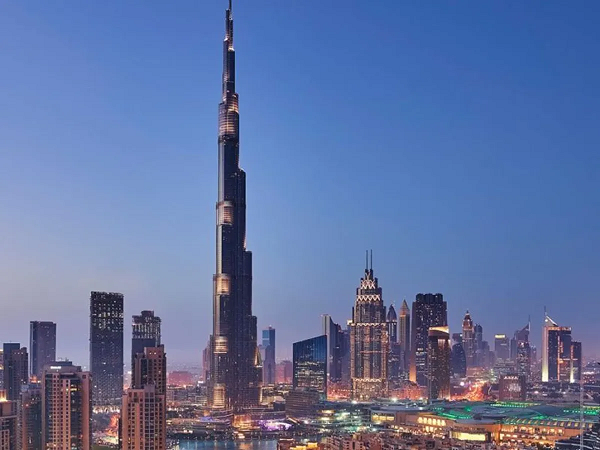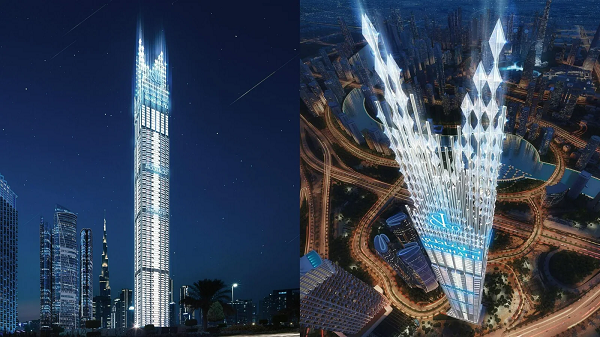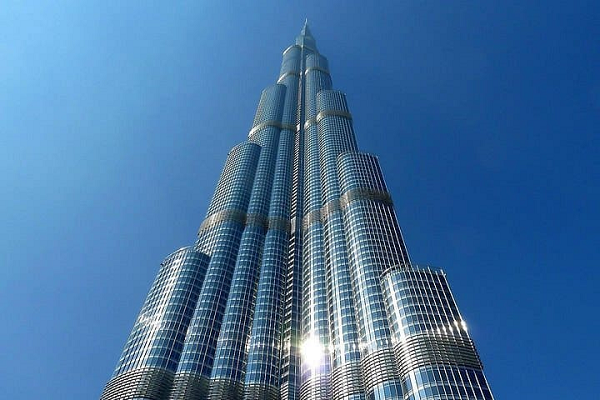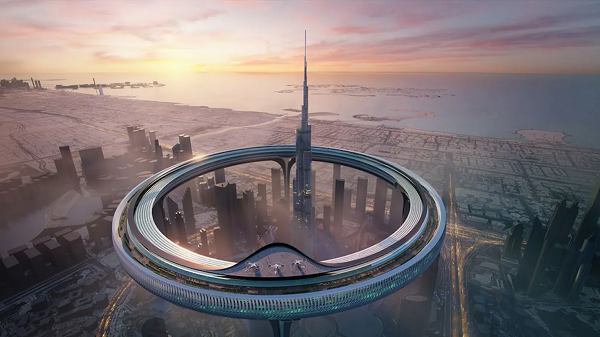In the realm of architectural marvels, skyscrapers stand as testaments to human ingenuity and ambition. These towering structures have become icons of modern civilization, pushing the boundaries of engineering and design. Among them, a select few claim the title of the tallest building in the world, captivating our imagination and inspiring awe. In this article, we will explore the history of these extraordinary structures and delve into the current reigning champion, showcasing the remarkable feats of engineering and the pursuit of vertical excellence.
The Evolution of Height
The quest to build taller and more impressive structures can be traced back to ancient times. Throughout history, humans have demonstrated a fascination with reaching for the skies, whether for religious, symbolic, or practical purposes.
Ancient civilizations, such as the Egyptians and the Mesopotamians, constructed massive structures that showcased their power and religious beliefs. The pyramids of Egypt, built as tombs for pharaohs, were towering structures that loomed over the surrounding landscape. The Great Pyramid of Giza, completed around 2560 BCE, held the title of the tallest man-made structure for over 3,800 years, reaching a height of approximately 146 meters (481 feet).
In medieval times, the construction of cathedrals became a demonstration of spiritual devotion and architectural achievement. Structures like the Lincoln Cathedral in England and the Cologne Cathedral in Germany reached impressive heights, with spires soaring above 150 meters (492 feet). These cathedrals utilized intricate stone masonry and vaulting techniques to create awe-inspiring interiors and exterior facades.

The Industrial Revolution in the 19th century brought about a revolution in construction techniques and materials. The invention of steel and the advancements in engineering allowed for the construction of taller and more robust structures. This led to the birth of the modern skyscraper.
The Home Insurance Building in Chicago, completed in 1885, is considered the first skyscraper. Designed by William Le Baron Jenney, it reached a height of 42 meters (138 feet) and featured a structural steel frame that supported its weight. This innovation paved the way for taller and more efficient buildings.
The race for height intensified in the 20th century. The Chrysler Building in New York City, completed in 1930, showcased the Art Deco style and reached a height of 319 meters (1,046 feet), temporarily surpassing the Eiffel Tower as the tallest structure in the world. It was soon surpassed by the Empire State Building, which rose to a height of 443.2 meters (1,454 feet) with its distinctive Art Deco design.
Advancements in construction technology, such as reinforced concrete and improved steel manufacturing, further propelled the race for height. The Petronas Towers in Kuala Lumpur, completed in 1998, held the title of the tallest buildings in the world at 452 meters (1,483 feet) until they were surpassed by the Taipei 101 in Taiwan in 2004, reaching a height of 509.2 meters (1,671 feet).
Today, the Burj Khalifa in Dubai stands as the tallest building in the world, pushing the limits of architectural and engineering achievements. The evolution of height in construction reflects our constant pursuit of innovation, pushing boundaries, and creating iconic structures that define our cities and captivate our imagination.
The Reigning Champion
The current reigning champion as the tallest building in the world is the Burj Khalifa, located in Dubai, United Arab Emirates. Designed by the architectural firm Skidmore, Owings & Merrill, the Burj Khalifa is an engineering marvel that stands at a staggering height of 828 meters (2,716 feet) with 163 floors.
Construction of the Burj Khalifa began in 2004 and was completed in 2010. The project was a collaborative effort involving thousands of workers, engineers, and architects from around the world. The construction process presented numerous challenges due to the extreme height and unique design of the building.
To withstand the forces exerted by wind and gravity at such heights, the architects and engineers implemented cutting-edge technologies and design features. The Burj Khalifa features a modified bundled tube structural system, where a series of wings extend from a central core, providing strength and stability. This innovative design allows the building to taper as it rises, reducing the effect of wind forces and ensuring structural integrity.
The exterior of the Burj Khalifa is clad in reflective glass panels that not only enhance its aesthetic appeal but also serve practical purposes. The glass panels provide insulation and reduce heat gain, contributing to the building’s energy efficiency. The façade also features aluminum and stainless steel spandrels, creating a striking visual effect as the sun reflects off the building’s surface.
The Burj Khalifa offers a range of functional spaces, including luxury apartments, corporate offices, a hotel, and observation decks. The observation deck, located on the 148th floor, offers breathtaking panoramic views of Dubai’s skyline and the surrounding desert. It is a popular tourist attraction, allowing visitors to experience the sensation of being at the top of the world.
Beyond its impressive height, the Burj Khalifa is also an architectural masterpiece in terms of its design. The building draws inspiration from Islamic architecture, with its elegant geometric patterns and intricate detailing. The spire at the top of the tower, resembling a minaret, adds to its cultural significance and serves as a visual representation of Dubai’s rich heritage.
The Burj Khalifa’s impact extends beyond its architectural and engineering achievements. It has become an iconic symbol of Dubai’s ambition, prosperity, and innovation. The presence of such a towering structure has helped put Dubai on the map as a global city and a destination for luxury, business, and tourism.

In addition to its architectural grandeur, the Burj Khalifa incorporates sustainability features. The building employs energy-efficient systems for cooling, lighting, and water conservation. It utilizes condensation recovery systems and graywater recycling to minimize water consumption. These sustainable practices showcase the commitment to environmental responsibility and contribute to Dubai’s sustainable development goals.
The Burj Khalifa’s reign as the tallest building in the world exemplifies human perseverance, innovation, and the pursuit of excellence in architecture. It stands as a testament to the limitless possibilities of human achievement. As technology and architectural advancements continue to evolve, it remains to be seen how long the Burj Khalifa will maintain its reign as the tallest building and which structure will eventually claim the title.
The Legacy of Tall Buildings
The legacy of tall buildings goes beyond their sheer height and architectural marvels. These iconic structures leave a lasting impact on the cities and communities in which they stand, shaping their identity and contributing to their development.
Tall buildings become symbols of progress, economic prosperity, and technological advancements. They often attract tourism, drawing visitors from around the world to witness these towering structures firsthand. The presence of such landmarks can significantly boost local economies, creating opportunities for businesses and driving urban development in their vicinity.
Furthermore, tall buildings serve as catalysts for innovation and advancement in the fields of architecture, engineering, and construction. The construction and maintenance of these structures require cutting-edge technologies and expertise, pushing the boundaries of what is possible in the built environment. The pursuit of building taller and more efficient buildings drives research and development in various industries, spurring advancements in materials, structural systems, and sustainable practices.
Tall buildings also leave a cultural and historical legacy. They become iconic landmarks that shape the skyline and leave a lasting impression on the collective memory of a city’s inhabitants. They become symbols of pride and identity, representing the aspirations and achievements of a community. Historical tall buildings, such as the Empire State Building or the Petronas Towers, serve as reminders of the architectural achievements of their respective eras.
Moreover, tall buildings have the potential to create social spaces and bring communities together. They often incorporate public observation decks, restaurants, or event spaces that become gathering points for locals and visitors alike. These spaces foster a sense of community and create opportunities for interaction and shared experiences.

As the legacy of tall buildings continues to evolve, there is a growing emphasis on sustainability and environmental responsibility. Many modern tall buildings incorporate green building practices, energy-efficient systems, and renewable energy sources. They aim to minimize their environmental footprint and promote sustainable urban development.
Tall buildings leave a profound legacy in the cities they inhabit. They become symbols of progress, innovation, and cultural identity. These architectural marvels inspire awe, drive economic growth, and push the boundaries of design and engineering. As the world continues to evolve, tall buildings will remain as testaments to human ingenuity and our ability to reach new heights.
Conclusion
The pursuit of building the tallest structure in the world continues to captivate our imagination and push the boundaries of what is possible. From ancient wonders to modern-day skyscrapers, humanity’s fascination with height has led to incredible feats of engineering and design. The current reigning champion, the Burj Khalifa, stands as a testament to human achievement and the indomitable spirit of innovation. As technology and architectural prowess continue to advance, we can only anticipate even more awe-inspiring structures that will redefine the limits of vertical excellence and shape the skylines of our cities for generations to come.
